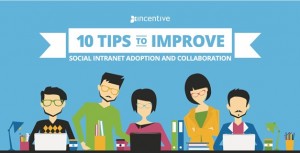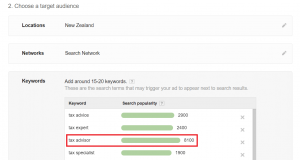Experts tell us how marketers will use data analytics to manage more effective customer engagement and staffing in physical locations.
In the year ahead, successful marketers will be using data to initiate more communications while respecting consumers’ privacy. In many cases, one of the most important messages the brand will be communicating is how they are honoring a commitment to privacy.
If a message is of real value to a consumer, however, it will be easy to tell based on the actions that follow from it. In 2022, the deep analytical dive will occur before those messages go out. These data insights will embolden the marketers who wield them, fueling a larger number of precise communications, many of them automated.
Proactive approach
In the new year, it won’t be a question of whether to communicate manually with customers one at a time, or to put your marketing efforts on autopilot. Instead, automation will be a must, and it will be driven by data analytics and AI.
“2022 will require brands to use AI and analytics to acquire insights and learn more about their customers before they even reach out,” said Andy Traba, Director of Product Marketing for cloud-based experience platform NICE CXone.
Marketers will have to do their homework ahead of time (because, of course, if they don’t, their competitors will). They should be analyzing the data points that tell them what service or product their customer might be looking for and what the preferred channel is to reach out to them.
“[This] will be the driving force for brands to better control the conversation – and have more meaningful interactions outright,” said Traba. “And, in order to build trust, appreciation and loyalty, brands must move away from ‘spamming’ and use more proactive communication to add value. This will mean using automated systems like smart, proactive AI-driven conversational chatbots to guide users through searches and early troubleshooting.”
Team adjustments
This doesn’t mean that communications with customers will be completely automated. Instead, it will be more important than ever to have service reps and other brand personnel at the ready and skilled in using new CX software.
“Businesses understand the value of a positive customer experience in order to maintain brand loyalty,” said Traba. “Brands will tap into AI and analytics to guide employees during interactions and recommend next-best actions, as well as to automate the more basic tasks so agents can focus on providing better, more empathetic experiences. Brands will invest more in training for front line employees, using AI and analytics to ensure they are well-prepared to resolve even the most complex queries.”
Just as the pandemic became a global force fundamentally changing how customers interact digitally with brands, global forces are also affecting workers at all levels in the org.
“With the pandemic upending labor market dynamics leading Americans to early retirements, career changes and what’s currently known as ‘The Great Resignation,’ brands must evolve in order to hold onto workers in the face of an acute labor shortage,” said Traba.
Using data in real time
In assembling a team of front line customer service professionals and sales staff, brands don’t have to be flying blind. Data on staff interactions with customers, online or in-store, is an important layer that helps deliver better CX and customer messaging.
And it’ll be in real-time, according to George Shaw, CEO and Founder of Pathr.ai, an AI-powered platform that provides insights into human behavior in physical spaces.
“Real-time human behavior analytics will help retailers achieve higher in-store sales through improved employee training,” Shaw said. “Real-time human behavior analytics in physical locations allows companies to address if staff is interacting effectively with customers. This could include anything from ensuring customers are being helped in a timely manner to making sure the proper number of cash registers are open and employees are focusing their efforts on high-margin items.”
Prioritizing first-party data
Google’s announced deprecation of third-party cookies rocked the boat enough in 2021 that marketers were left scrambling for alternative data sources to keep their future campaigns afloat.
“In 2022, the marketers who depend on third-party data, from cookies and other sources, will need to consider and prepare for the inevitable ‘death of the cookie,’” said Tracey Ryan O’Connor, Group Vice President at personalization technology company Qubit, which was recently acquired by AI-powered experience platform Coveo. “The retailers who prioritize first-party data sources from customer journey data, CRM platforms, POS systems, retail apps, affiliate marketing programs, etc. will be well-positioned. For the brands that use a mix of first-party and third-party data, they will face a myriad of challenges as they lose access to cookie data.”
Marketers will also find that “renting” data in expensive advertising environments like Facebook is more costly than building your own first-party customer data resources, according to Michael Osborne, President of messaging and notification engine Wunderkind.
“Take advantage of your brand’s own consumer data before turning to rented data (Google, FB Ads, etc), as this can be a more cost-effective and bespoke solution,” said Osborne. “Analyzing your own customers’ shopping habits and implementing it towards a greater purpose is the solution.”
More loyalty
One benefit of a more regulated exchange of data between consumers and marketers is that consumers feel like they will be in more control of their data. This, in turn, might lead to more confidence in sharing data with trusted brands. 2022 will be a pivotal year in this evolution.
“Loyalty programs will be in the 2022 spotlight,” said Nikki Baird, Vice President of Retail Innovation at retail technology provider Aptos. “This new take on loyalty won’t be the pay-for-data schemes of old. A term that we’ll hear more and more is ‘zero-party data.’ This is the information that consumers intentionally share with a retailer.”
She added, “Armed with this insight into shoppers’ preferences, purchase intentions, and context, optimally, a retailer can deliver a better and more personalized experience. But retailers need to be mindful – when a shopper freely gives you their information, they expect you to put it to good use and provide value in return.
‘Clean rooms’ and publisher data
Robust loyalty programs of the future will help marketers grow value from existing customers. To acquire new customers, the advertising ecosphere will have to be more data-driven than ever because of rising consumer expectations for relevant ads.
So, in 2022 this balancing act between harder-to-come-by data and relevant ad experiences will become more challenging, and the full value of data collaborations will manifest.
“As we face a cookie-less future, clean rooms will emerge as the answer to providing more advanced analysis around attribution and measurement,” said Libby Morgan, Senior Vice President, Chief Strategy Officer for IAB. “Clean rooms are where the walled gardens are able to share aggregated data with advertisers while still adhering to privacy laws and data restrictions. Whether used for transactional audience matching and segment building or for advancements in how data is shared, clean room solutions will continue to grow and mature as true cross-platform opportunities associated with the promise of ‘right ad at the right time’ continue to evolve.”
“One of the most promising solutions for a cookie-less future lies in publisher first-party data, and in 2022 I believe we will see an increase in its value to buyers,” said Ashley Wheeler, Vice President, Seller Accounts for independent SSP Magnite. “While the true value in publisher first-party data as a replacement to the third-party cookie lies in its ability to scale to the open marketplace, in the near term, I think buyers will start to increase their reliance on publisher first-party data and publishers will lean into first-party data as a key point of differentiation to drive revenue from the open marketplace into private marketplaces.”
“The future of data collaboration will rely on secure, data matching services that can allow agnostic collaboration and not require data to be moved,” said Kristen Williams, Magnite’s Senior Vice President, Strategy Partnerships. “There won’t be one solution that will provide the answers to all of the industry’s identity needs, so tools will need to be able to reach across service providers.”
Proactive accountability
The confidence that successful marketers take into their new data-backed communications with customers in 2022 will give them an edge against competitors. Being proactive about consumer privacy and data transparency will also help establish a trusting relationship that can only add to the marketers’ swagger.
“With all the news about protecting, and being transparent about consumer privacy, it only makes sense for consumers to want more clarity on how their data is being used,” said Shubham A. Mishra, CEO and Co-Founder of Pyxis One, a codeless AI infrastructure company. “More information on what consumers are saying ‘Yes’ to when they click on the ‘I Agree’ button of privacy policies is a huge potential story.”
Just as marketers bring more data into the fold for consumer messaging and staff support, they should expand the conversation around privacy. The more they know about how the customer feels on these issues, the more trust and loyalty they can earn in the coming year.
Read next: 2022 Predictions: Customer Experience & Digital Experience
The post 2022 Predictions: Data strategy and privacy appeared first on MarTech.
MarTech(12)







